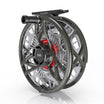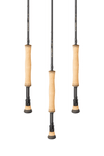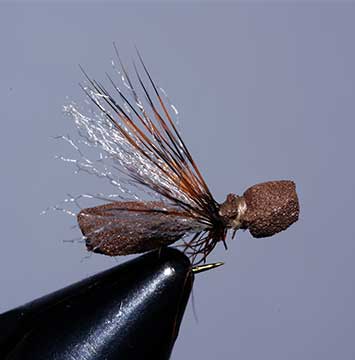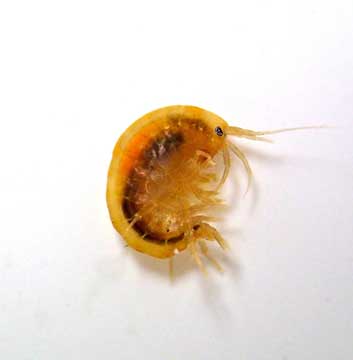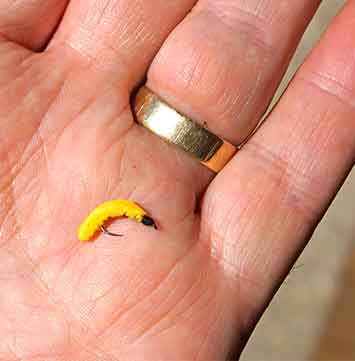I am a great believer in keeping things simple when fly fishing & when fishing the dry fly most of my fish come to 4 very basic patterns; a variant of Jack Tucker’s CdC IOBO Humpy, a simple CdC Shuttlecock, Marjan Fratnick’s F Fly & a basic Elk Hair Caddis tied with no hackle.

However there are some situations where these flies are not the ideal choice so I do have some more specialised flies in my box. On some New Zealand rivers during midsummer a size 18 or 20 Willow Grub can be an essential addition to the fly box. I wouldn’t be without some big Chernobyl Ants or Foam Beetles when fishing the high alpine streams of Austria & Italy. In late April/early May I wouldn’t be without a specific Hawthorn Fly pattern.
Then there is the occasional day in late summer, in the UK & elsewhere, when flying Ants emerge on mass. Also, on my local North Yorkshire Moors streams Wood Ants are prolific in the forests that border the upper reaches of many of the streams & on breezy days they frequently fall from the overhanging branches. Trout & grayling love Ants. Maybe it is the sour taste of formic acid that they love, but what ever it is the fish can become preoccupied with them when there is a good fall of Ants.
I have 2 favourite patterns. The first is Stuart Crofts’ F Ant, an F Fly variant that has a submerged body that helps to ‘anchor’ the fly into the surface helping to resist micro-drag whilst also making it appear vulnerable to the fish.

Stuart Crofts’ F Ant
Hook: size 20 to 16 Grub
Thread: Black 8/0
Body: Bug Bonded thread with a waist of red holographic tinsel
Wing & head: Natural Mallard CdC
My second pattern is a simple Foam Ant of my own devising.

Foam Ant
Hook: Size 24 to 20 Short Shank (Tiemco 2488)
Thread: Brown
Body: Brown 2mm thick sealed cell foam (trimmed to shape)
Hackle: Rusty Grizzle (trimmed top & bottom)
Wing: White Tiemco Aerowing or similar






